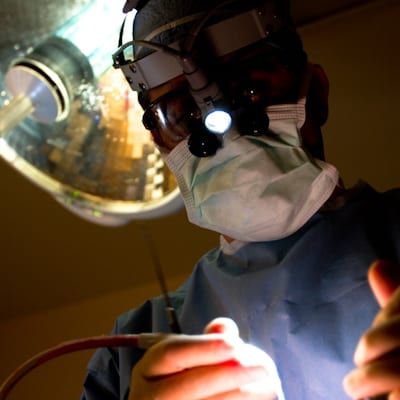Choosing The Right Surgery
Perhaps the most important decision is choosing the right thyroid surgeon. After that, it is also very important to choose the right type of surgery. This varies depending on the actual diagnosis and treatment plan. There are several different options for thyroid surgery.
Partial Removal: Thyroid lobectomy or Thyroid Hemi-thyroidectomy
If we think of the thyroid as a butterfly, removing one wing of the butterfly would be called a thyroid lobectomy. Removing one wing of the butterfly and the body of the butterfly would be called a hemithyroidectomy. Both options leave a part of the thyroid behind, which is good for supplying hormone needs for the patient after the operation. Most people who have a lobectomy or a hemithyroidectomy are able to maintain normal or near normal thyroid function despite having part of their thyroid removed.

Complete Removal: Total Thyroidectomy
In a total thyroidectomy, the entire butterfly is removed. Because this operation removes all of the thyroid the patient will need to be on thyroid hormone replacement for the remainder of their lifetime. Thyroid hormone is important for every cell in the body and affects the way each and every cell function, so it is critical that the right hormone levels be established after removal of the thyroid.
Additional Neck Surgery
Sometimes when the thyroid needs to be removed for thyroid cancer, additional work needs to be done at the same time. The lymph nodes that immediately surround the thyroid, referred to as the central neck compartment, often need to be cleaned out during a cancer operation. This is a much more difficult operation than a standard total thyroidectomy and involves increased risk of injury to both the parathyroids and the recurrent laryngeal nerve. This type of operation should only be done by expert surgeons who specialize in thyroid surgery. In more extensive cancer situations, the lymph nodes in the lateral neck may also need to be addressed surgically. These operations can be called modified radical neck dissections or selective neck dissections. In either case, the idea is that the lymph nodes where cancer has spread or is at risk for spreading are removed during the same operation in which the total thyroidectomy is performed. This is also a more complex operation and should only be done by experienced thyroid cancer surgeons. Surgeons who perform thyroidectomy on an occasional basis are not well-qualified for these more extensive operations.
Revision Surgery
Finally, there is sometimes a need for a reoperation. This may be because of unexpected cancer that was found in a first operation. Another reason for reoperation is that a thyroid remnant is left behind; this happens most often with low-volume surgeons. Revision surgeries of these types should be done by experienced thyroid surgeons that are high-volume. This lessens the chance for complications from these more difficult operations.
Which surgery is right for you?
Which surgery is right for you depends upon a number of factors including the information we gather from ultrasound evaluation and from fine needle aspiration biopsy. These results need to be discussed with each and every patient and so is difficult to generalize. Thyroid cancer, which is highly treatable, has achieved high success rates primarily because total thyroidectomy has been the treatment of choice. There is more recent evidence that perhaps total thyroidectomy is not required in all cases and so lobectomy and hemithyroidectomy has become a viable option for selected patients. Discussions on which operation is best should be undertaken by the patient and surgeon and is certainly individualized for each and every patient. Whichever operation is chosen by the surgeon and patient after a long discussion, the risks of that surgery are going to be unique to that type of surgery. You can find more information on risks of surgery here.
